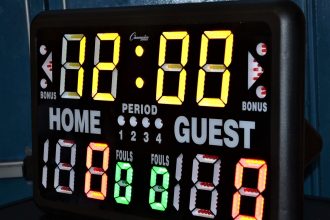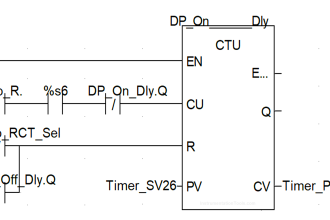MCQ ON Flow Measurement
1.A differential pressure transmitter is calibrated 0 to 80 inches of water and transmits a 4 to 20 mA dc signal. This transmitter is placed across an orifice plate which is sized to create 80 inches of water differential 6 gallons per minute. What is the flow rate when the signal is 13 mA dc?
a. 4.5 gpm
b. 3.9 gpm
c. 3.4 gpm
d. 4.9 gpm
Answer: a
2. For the equipment described in the preceding question, what will the signal be if the flow rate is 4 gpm?
a. 13.3 mA dc
b.11.2mAdc
c. 8.9 mA dc
d.6.7mA dc
Answer: b
3. Assume the line used in Questions 1 and 2, is a 1/2-inch schedule 40 pipe (IV = 0.622 inches). find the orifice bore used to satisfy the conditions given if the measured fluid is water at 60 Deg F
a. 0.190 inches
b. 0.556 inches
c. 0.414 inches
d. 0.352 inches
Answer: d
4. The best choice of orifice taps in the preceding problem would be:
a. flange taps
b. vena contracta taps
c. pipe taps
d. corner taps
Answer: d
5. A 2-inch schedule 40 line (lD = 2.067) is used to carry gasoline (SP GR = 0.75). The flow rate is measured with an orifice plate (d = 1.034) and pipe taps are used. At full flow rate, a differential pressure of 50 inches of water is produced. What is the approximate full flow rate in gpm?
a. 30 gpm
b. 53 gpm
c. 250 gpm
d. 36 gpm
Answer: d
6. Assume an 8-inch schedule 160 pipes (ID = 6.813 inches) carries a full flow of 40,000 pounds per hour of dry saturated steam. The static pressure is 335 psi. Flange taps are used and the differential pressure across the orifice plate at the full-flow rate is 100 inches of water. What is the size of the bore in the orifice plate?
a. 4.357 inches
b. 3.645 inches
c. 2.271 inches
d. 5.109 inches
Answer: d
7. Fuel gas is carried in a 6-inch schedule 40 pipe (ID= 6.065 inches). The flow rate is measured with an orifice plate using flange taps and the bare in the orifice is 3.457 inches. The specific gravity is 0.88, the flowing temperature is 60 °F, and the static pressure is 25 psi. Maximum flow rate creates a differential of 20 inches of water. What is the approximate flow rate in cubic feet per day?
a. 1,500,000 SCFD
b. 2,000,000 SCFD
c. 2,500,000 SCFD
d. 3,000,000 SCFD
Answer: a
8. The output of a target flowmeter is:
a. Proportional to volumetric flow rate
b. Proportional to the square of volumetric flow rate
c. Proportional to the square root of volumetric flow rate
Answer: b
9. The output signal or reading of a magnetic flowmeter is:
a. Proportional to volumetric flow rate
b. Proportional to the square of volumetric flow rate
c. Proportional to the square root of volumetric flow rate
d. Inversely proportional to volumetric flow rate
Answer: b
10. With suspended solids and/or entrapped gas in a flowing liquid, the magnetic flowmeter will:
a. Read high
b. Read low
c. Read the liquid flow only
d. Read the correct total volume of the mixture
Answer: a
11. A turbine flowmeter produces an output in the form of pulses. The total number of pulses is:
a. Inversely proportional to flow
b. Directly proportional to total flow
c. Proportional to the square root of flow
d. Proportional to the square of flow
Answer: d
12. Match the head meter primary devices with the application (select a single best answer for each):
a. Orifice Plate 1.High Pressure recovery
b. Flow Nozzle 2. Air ducts
c. Venturi Tube 3. Sediment in liquid
d. Pitot tube 4. Economy & Accuracy are important
e. Elbow taps 5. No straight run available
Answer : 43125

















We think question 1 should be c. Can you explain the answer?
Most of the answers are wrong
Hi Julius, Please share your answers with explanation.
Can to discuss the answer
In question 9 answer should be (a)